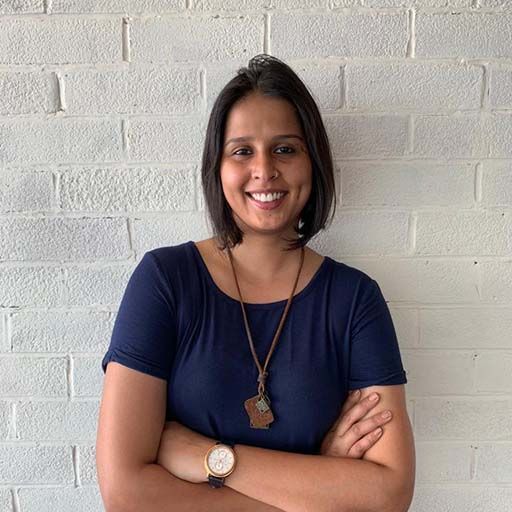RACHEL SERRAO
Head of Design, Space Matrix (Interview PART-1)
Rachel Serrao emphasizes the importance of user-centric design, advocating for architects to prioritize the needs of the user group over their own personal preferences. She champions the use of proportionate design principles and a simplified approach to design, prioritizing attention to detail.
As a child, Rachel Serrao di’t consider architecture a popular career choice unlike today. It wasn’t until she met a family friend who designed beautiful homes in Kerala that she became enamored with the profession. Rachel attended one of the most prestigious universities in the field of architecture and design, CEPT University, where her journey began.

She found architecture to be more than just a profession; it transformed her into an open-minded person. Rachel learned the importance of choices and opinions in shaping a person’s identity. In 2011, she began her career at Space Matrix and has since gained enriching experiences due to the organization’s diversity. Rachel took a break from Space Matrix to explore entrepreneurship and spent two years developing new verticals in retail and commercial residents. Although Rachel felt she wasn’t ready to be an entrepreneur just yet, her time exploring gave her a clearer path for her career. She has spent the last three years back at Space Matrix solidifying her ideas for a career in workplace design.
According to Rachel, the most defining moment of her career was completing a large-scale project for Space Matrix amidst a pollution ban and a pandemic. Despite not leading the design implementation, Rachel embraced the challenges and felt immense satisfaction upon completion. She describes this project as a testament to her passion for the industry and her ability to succeed within it. Rachel notes that each step of her journey, from studying architecture to working on commercial and retail projects at Space Matrix, has been a defining moment. She has gained a sense of direction and purpose in her career, which brings her great fulfillment.
Rachel emphasized the importance of being open-minded as a designer, which means not only accepting but also learning from other people’s ideas. She believes that successful design leaders should not only create designs on paper, but also have the vision to implement them and understand their practicalities. Understanding the client’s needs is also essential, but Rachel added that it’s equally important to question them in a respectful manner. As designers, it’s our responsibility to question every element we design and to educate clients about new trends, technology, and nuances. Ultimately, being open-minded and willing to question and learn from others is key to creating successful designs that meet the needs of both the clients and the users.
Balancing creativity with project budget has always been the most difficult challenge for Rachel. It involves balancing creativity with practical requirements, managing potential conflicts, and addressing the client’s needs, all while adhering to a strict budget. According to Rachel, failure to strike a balance could result in losing both a job and a client, both of which are crucial to the success of the organization.
Rachel emphasizes that creativity is not just about colors and materials but about finding innovative ways to deal with cost, requirement, or detailing issues. Designers do not work in a vacuum and must interact with clients and suppliers, and creativity alone cannot guarantee project success. Success in design requires attention to other important aspects of the project. Educating the client on the best long-term options for the project is often the key to success.
Rachel emphasized that as a designer, she believes that spaces should be designed with the user group in mind, not just for oneself. Practicality and social responsibility are essential elements that should be taken into consideration. Additionally, she mentioned that at Space Matrix, they implement their core values and learnings into practice. A successful design project is not solely dependent on design but requires equal participation from other departments and verticals. Every department has an important role in the project’s outcome, and their contribution should be acknowledged.
According to Rachel, the fundamental principles of design are universal, regardless of the field, whether it’s interior design, architecture, or urban planning. Balance, alignment, and contrast are key principles that she prioritizes in her work, and when applied proportionately, they contribute to the success of a project. Rachel also emphasized the significant impact of design on human psychology, whether it’s for a cityscape or an interior space. Modern design is characterized by the simplification of forms, and appropriate lighting is crucial in interior spaces. Rachel firmly believes that less is more, and in such a scenario, attention to detail becomes even more important. (To be continued)
